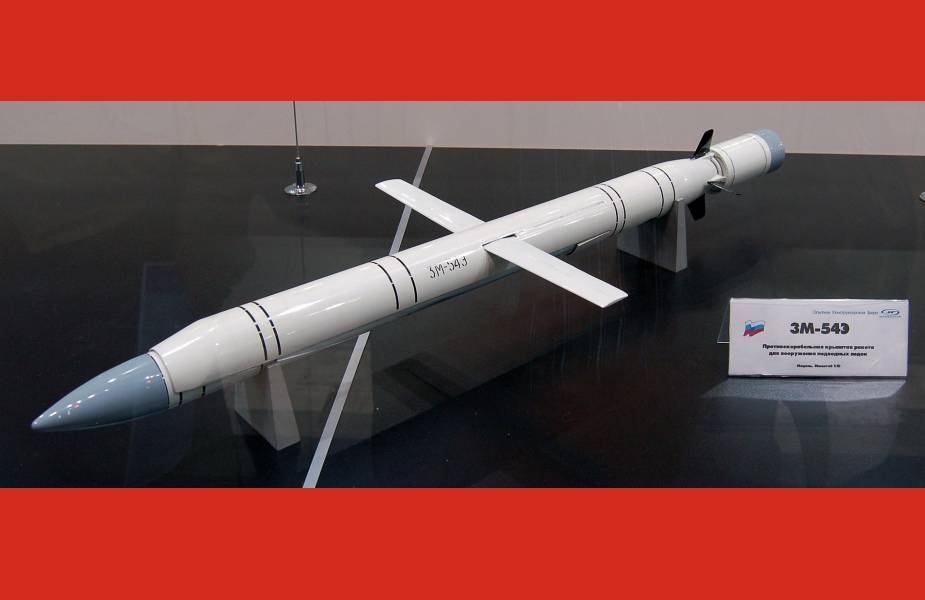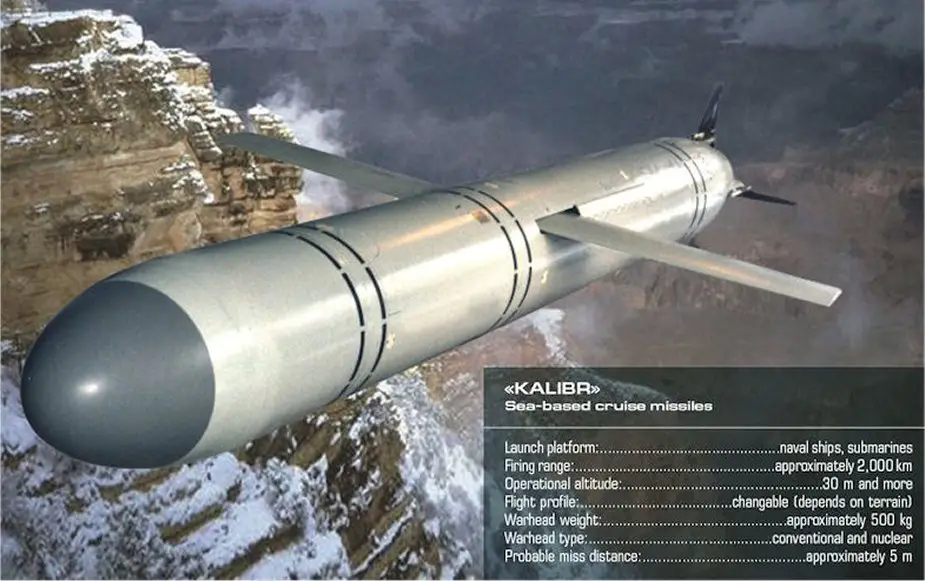Kalibr 3M-54 Kalibr 3M14 Biryuza SS-N-27
Naval Cruise Missile - Russia

Description
The Kalibr is a family of cruise missiles developed by the Russian design bureau Novator. The family of missiles was based on two projects: the 3M10 strategic nuclear cruise missile with a combat radius of 2,500 kilometers, developed by the Novator design bureau from 1975 to 1984, and the Alfa anti-ship missile competition (the Biryuza OKR). Initially, only the supersonic Yakhont PKR missile participated in the Biryuza R&D competition, but its development was delayed, which resulted in the missile being quite expensive. The 3M10 project ran into problems because of the Short and Medium-Range Missile Reduction Treaty. In 1986, the Novator design bureau proactively proposed a non-nuclear version of the KS-122 naval missile. But due to the subsonic speed of the attack, it did not suit the selection committee. The works were continued and in 1990 a new version with a supersonic final booster for the successful overcoming of the enemy defense systems was presented. But the collapse of the USSR that began put a halt to the introduction of such a product. The "Kalibr" family of missiles was developed on the basis of two projects: strategic nuclear cruise missile 3M10 with a combat radius of 2.5 thousand kilometers created during 1975-1984, and the anti-ship missile competition Alfa (OKR Biryuza) at SMKB Novator. Besides, at the same time, there was carried out the development of an antisubmarine system based on KS-122 to replace outdated and cumbersome complexes Rastrub-B and Vodopad. The last version of this missile was demonstrated back in 1997. The Kalibr family of missiles was first presented to the public at the 1993 International Aviation and Space Show (MAKS-93) held in the Moscow region of the Russian Federation.
Model variants:
3M54K: a submarine-launched anti-shipping variant
3M54T: an anti-shipping variant deployed by the Russian Navy on surface ships.
3M14K: (SS-N-30A): an inertial guidance land attack variant
3M14T: an inertial guidance land attack variant
Kalibr-M: is a new version of Kalibr with a larger warhead and extended range
Technical Data
| Design |
|
The performance characteristics of the Kalibr series in service with the Russian Armed Forces are additionally unknown. The range of the Kalibr against ground targets (as of 2012) is 2,600 km, against sea targets - 375 km. According to other reports, the 3M14 has a range of 2,000 to 2,600 km with thermonuclear warheads. |
| Warhead |
|
It has a fragmentation-fuzed or penetrating high explosive warhead with TNT equivalent of 200-450 kg, or tactical thermonuclear warhead of 50 kt.
|
| Propulsion |
| The Kalibr cruise missile is powered by a multi-stage solid-fuel rocket, turbojet engine and can develop a speed of 0.8 to nearly 3 Mach. |
| Combat use |
| There are ship-launched, submarine-launched, and air-launched versions of the missile, and variants for anti-ship, anti-submarine, and land attack use. The missile could be launched from Kilo class, Lada class, Amur class, Akula class, Yasen class, and Borei class submarines. But also from Admiral Gorshkov class, Admiral Grigorovich class, and Gepard class frigates. |
| Guidance system |
| Depending on the variant, guidance is provided by INS (inertial navigation) and radar/ARGS (radar guidance head). The 3M-14E version of the Kalibr-NK missile, in addition to INS and RLGSN, can be corrected by GLONASS or GPS. |
Specifications
| Type | Warhead Type |
| Sea-launched cruise missile | High explosive, possibly nuclear-capable |
| Country Designer | Class |
| Russia | Sea-launched Land Attack Cruise Missile |
| Country operators | Length |
| Russia | 6.2 m |
| In Service | Propulsion |
| Since 2015 | Turbojet |
| Payload | In Service |
| 450 kg warhead: | 2015 |
Details View
 |
Pictures - Video









